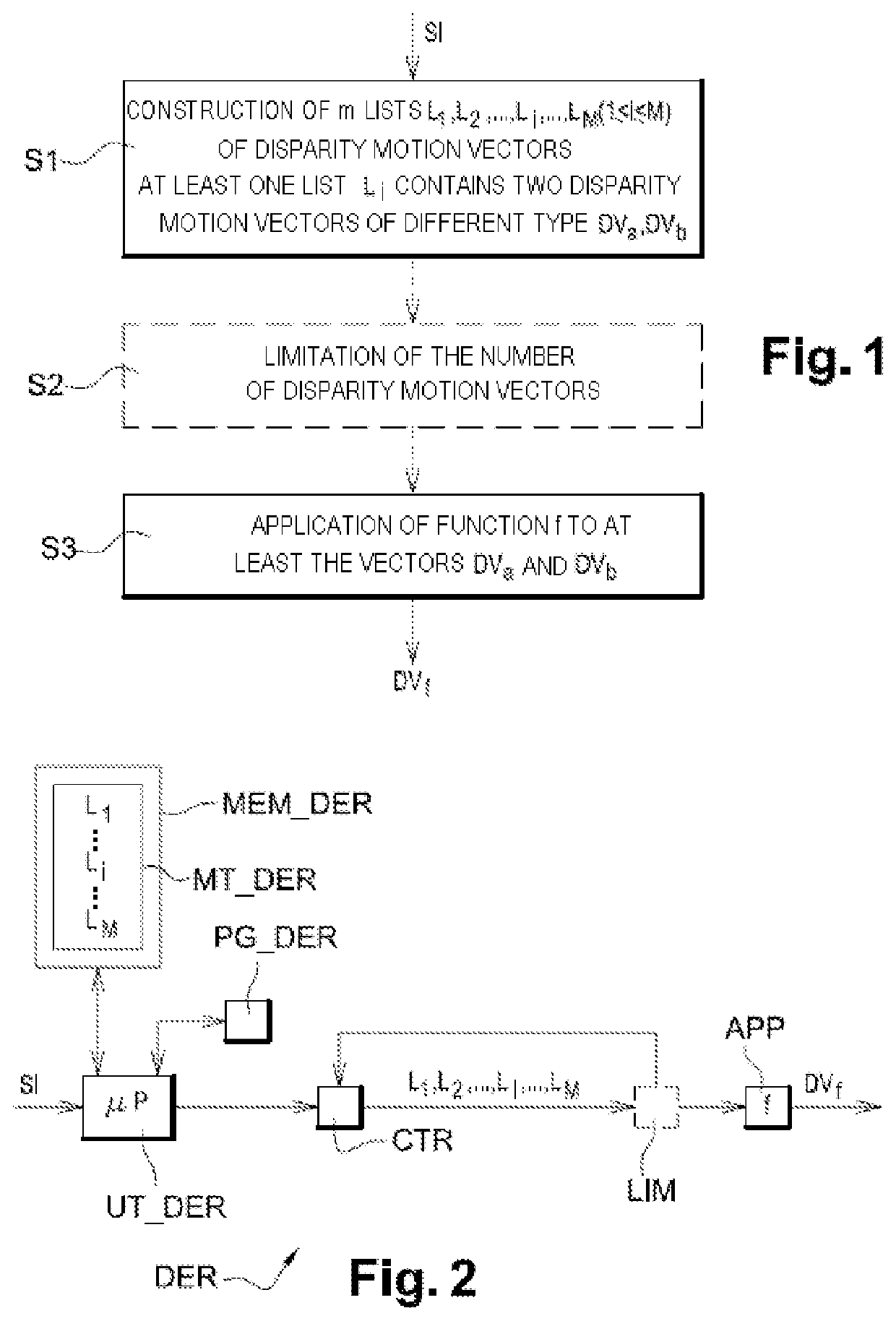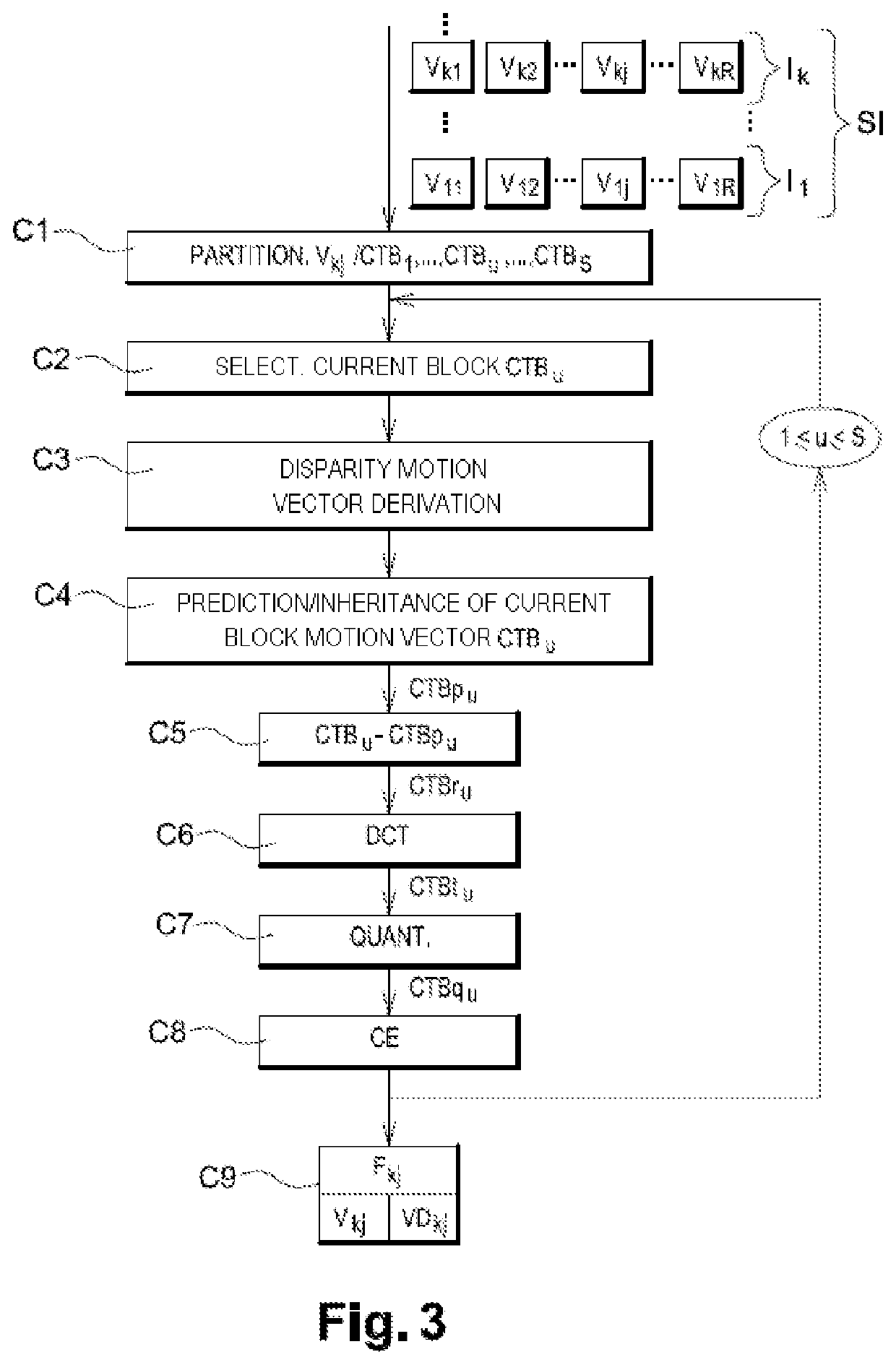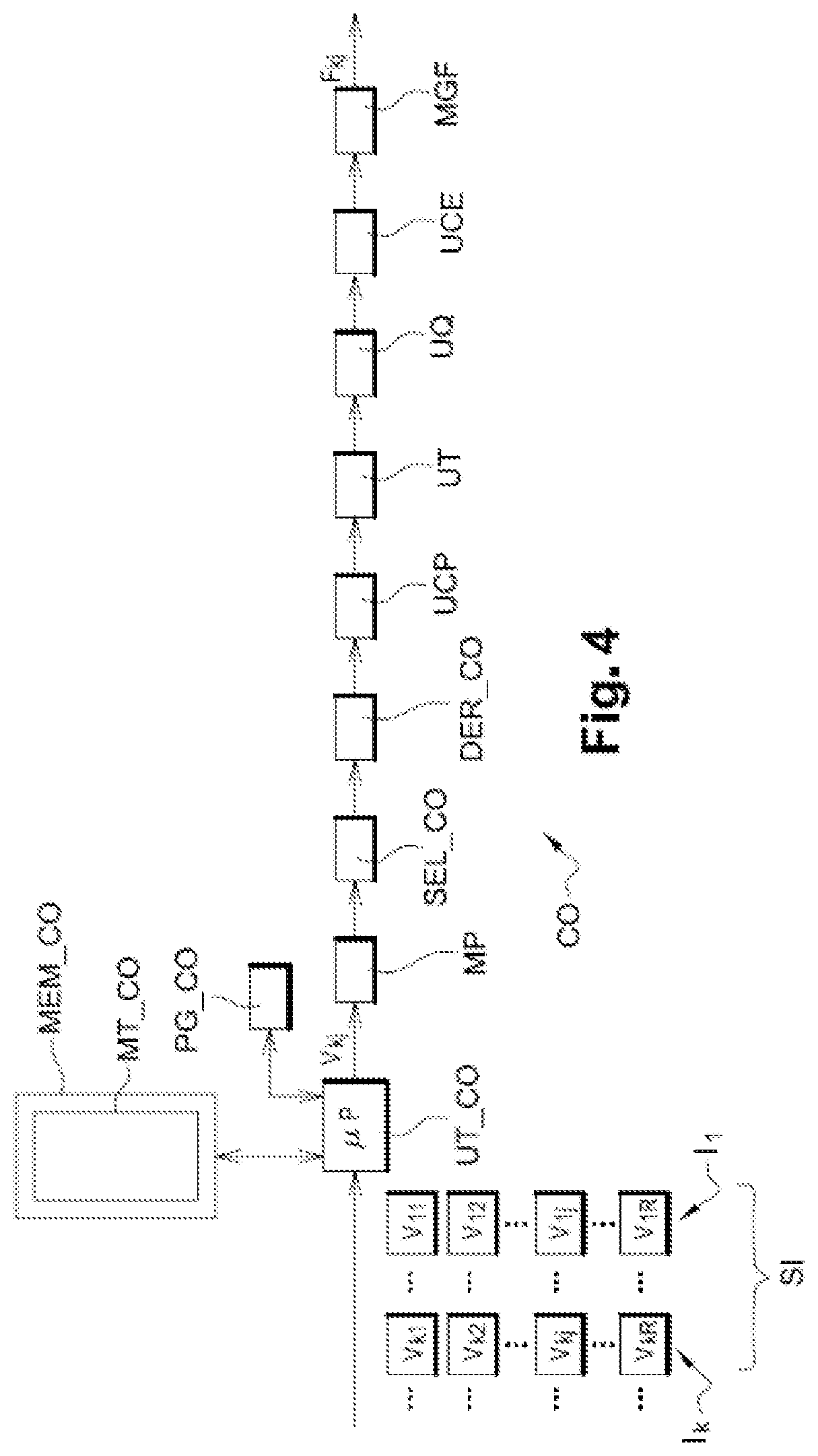Derivation of disparity motion vector, 3D video coding and decoding using such derivation
a motion vector and motion vector technology, applied in the field of image processing in three dimensions, can solve the problems of high cost associated with mvc coding, limited to views which necessarily contain texture and depth components, and achieve the effect of more reliable and accura
- Summary
- Abstract
- Description
- Claims
- Application Information
AI Technical Summary
Benefits of technology
Problems solved by technology
Method used
Image
Examples
Embodiment Construction
[0088]An embodiment of the invention will now be described, in which the disparity motion vector derivation method according to the invention is for example intended to be implemented in the case of the coding / decoding of an image or of a sequence of images according to a binary stream close to that that is obtained by a coding / decoding conforming, for example, to the 3D-HEVC standard currently being prepared.
[0089]To this end, the image or images considered may, for example, be in MVV or MVD format.
[0090]In this embodiment, the derivation method according to the invention is for example implemented by software or hardware by modifications to a derivation device contained in a coder / decoder initially conforming to the 3D-HEVC standard. The derivation method according to the invention is represented in the form of an algorithm comprising steps S1 to S3 as represented in FIG. 1.
[0091]According to the embodiment of the invention, the derivation method according to the invention is impl...
PUM
 Login to View More
Login to View More Abstract
Description
Claims
Application Information
 Login to View More
Login to View More - R&D
- Intellectual Property
- Life Sciences
- Materials
- Tech Scout
- Unparalleled Data Quality
- Higher Quality Content
- 60% Fewer Hallucinations
Browse by: Latest US Patents, China's latest patents, Technical Efficacy Thesaurus, Application Domain, Technology Topic, Popular Technical Reports.
© 2025 PatSnap. All rights reserved.Legal|Privacy policy|Modern Slavery Act Transparency Statement|Sitemap|About US| Contact US: help@patsnap.com



